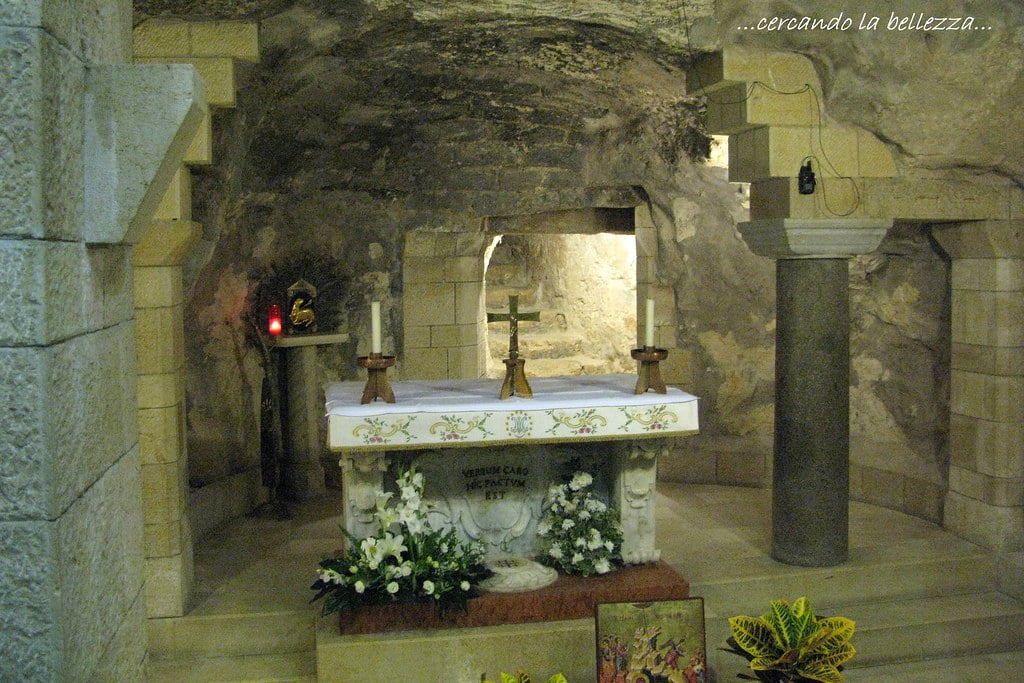Enchanting Historical Sites
The ancient town of Tsippori, nestled in the heart of Galilee, is a must-see for history buffs. Once known as the ‘Jewel of the Galilee,’ Tsippori is home to an astonishing mosaic floor featuring an iconic image known as the Mona Lisa of Galilee. The archeological site also showcases a network of Roman-era streets, aqueducts, and the remains of an impressive theater.
Another hidden historic gem is the Bar’am National Park, where the remnants of one of the region’s most beautiful ancient synagogues stand among a lush green landscape. Nearby, in the village of Peki’in, visitors can delve into the living history of one of Judaism’s oldest communities.
Stunning Natural Wonders
Makhtesh Ramon, often overlooked in favor of Israel’s more famous sites, is a geological phenomenon and the world’s largest erosion crater. The multicolored sands and uniquely shaped rock formations create a moon-like landscape that is simply breathtaking. A visitor center onsite provides fascinating insights into the natural history of the region.
For a taste of tranquility, the Hula Valley is a serene paradise for nature lovers and birdwatchers. The spectacle of migrating birds against the backdrop of the Golan Heights is one of Israels’s most mesmerizing sights. The valley also hosts eco-activities such as kayaking and biking, helping visitors connect with the beauty of Israel’s diverse flora and fauna.
Cultural Havens
In Israel, culture is everywhere, but certain local gems provide an unexpectedly deep dive into the country’s diverse heritage. The picturesque village of Ein Hod, snuggled on the western slopes of Mount Carmel, is an artists’ colony that boasts galleries, studios, and workshops set amidst olive groves. The village’s unique ambiance is perfect for soaking up Israel’s contemporary creative spirit.
Similarly, the lesser-known city of Lod, not far from Tel Aviv, is steeped in history and cultural diversity, with a mosaic of Jewish, Muslim, and Christian communities. The city’s archeology museum and ancient landmarks, such as the Church of Saint George, provide a rich tapestry of the region’s multicultural past.
Culinary Delights
Israel’s culinary scene extends far beyond the well-trodden markets of Jerusalem and Tel Aviv. In the northern region of the country, culinary enthusiasts can embark on a sumptuous adventure in the Druze villages, where unique flavors and traditional Druze hospitality await. Majdal Shams and Beit Jann are among the villages where you can sample authentic dishes and learn about Druze culture.
The town of Tzfat, known for its spiritual legacy and mystical Kabbalah, is also home to a burgeoning food scene. Here, visitors can enjoy a blend of Sephardic, Ashkenazic, and Galilean cuisine while meandering through the old city’s alleyways and art galleries.
Conclusion
Israel is a country rich in sights and experiences that often go unseen by those following the tourist trail. From ancient historical sites and breathtaking natural wonders to vibrant cultural experiences and delectable culinary discoveries, the treasures that lie off the beaten path are countless. Travellers willing to step beyond the well-known attractions will find that Israel’s hidden gems offer a refreshing perspective and a deeply rewarding journey.
FAQs
- Do I need a guide to explore these hidden gems in Israel?
- While it’s possible to explore these sites on your own, a knowledgeable local guide can offer valuable insights and historical context that you might otherwise miss.
- Are these off-the-beaten-path locations accessible via public transportation?
- Some of these locations can be reached by public transportation, but others may require a car rental or organized tour for convenient access.
- Is it safe to travel to these less-known spots in Israel?
- Israel is generally a safe destination for tourists. However, it’s always wise to stay informed about current travel advisories and be aware of your surroundings.
- What is the best time of year to visit these hidden gems?
- The optimal time to visit these sites is during the spring (March to May) or fall (September to November) when the weather is most pleasant.

